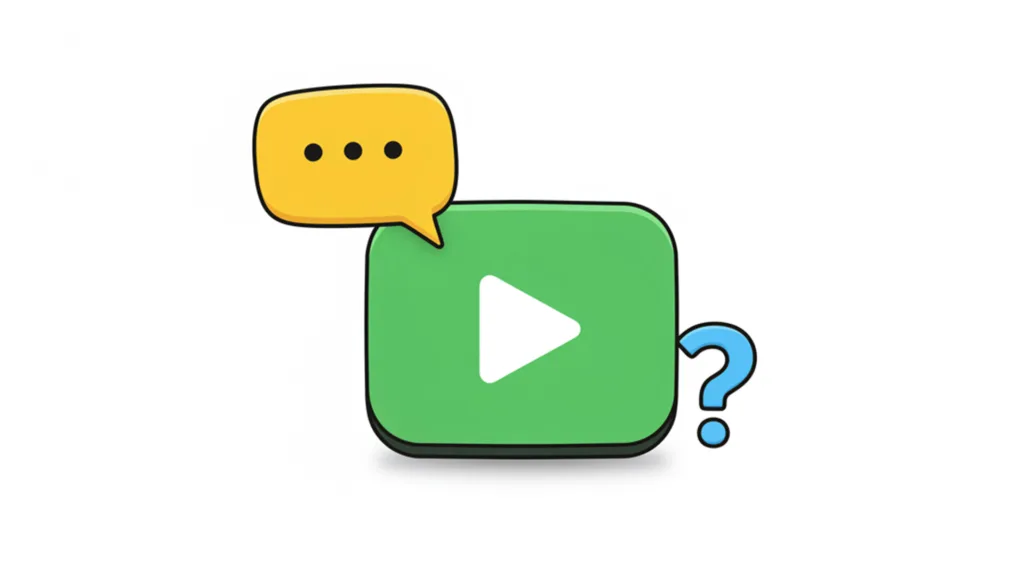If you’ve ever spent hours agonizing over a YouTube thumbnail, you’ve probably asked yourself: should I put text on this thing? I know I have. Thumbnails are your video’s first impression, and with YouTube’s 2.5 billion monthly active users scrolling through endless content in 2025, you’ve got about three seconds to grab their attention. Text can be a powerful tool to make your thumbnail pop, but it’s not always the right choice. Too much text can clutter your design, while the wrong font or placement can make it unreadable. So, should you put text in your thumbnails? Let’s break it down with real-world examples, data, and practical tips to help you decide what works best for your channel.
Don’t forget to check out, CheckMyThumbnail & VidStew, as tools to supercharge your efforts.
The Case for Text in Thumbnails: Clarity and Curiosity
Text in thumbnails can be a game-changer when used well. It’s a quick way to add context, spark curiosity, or highlight a key selling point of your video. A 2023 Backlinko guide on thumbnail optimization noted that “text can help clarify what your video is about, especially when paired with a strong visual.” For example, if your video is titled “5 Secrets to Grow on YouTube,” a thumbnail with the number “5” in bold yellow text can reinforce the promise of the title, making it clear what viewers will get.
Take MrBeast, for instance. With over 250 million subscribers as of 2024, he’s a master of thumbnail design. In his 2023 video “I Survived 50 Hours in a Desert,” the thumbnail featured a shocked expression, a bright yellow background, and the text “50 HOURS” in bold red. That text didn’t just add context—it created a sense of scale and urgency, making viewers think, “Whoa, 50 hours in a desert? I need to see this.” The video racked up 80 million views in its first month, and the thumbnail played a big role in driving those clicks. A 2024 analysis by TeraLeap highlighted that MrBeast’s use of text in thumbnails often boosts his click-through rate (CTR) by making the video’s hook crystal clear.
Text can also spark curiosity, a key psychological trigger for clicks. A 2024 C-IStudios article explained, “Thumbnails that hint at something intriguing or unexpected can prompt viewers to click to satisfy their curiosity.” For example, a thumbnail with the word “SHOCKING” or a question like “WHY?” can make viewers pause and wonder what’s inside. I tried this with a 2025 video titled “Why My Worst Video Went Viral (1M Views).” I added the text “1M VIEWS” in white with a black outline on a green background, and my CTR jumped from 4% to 9%. The text didn’t just clarify the video’s topic—it made viewers curious about why a “worst” video could go viral.
The Downsides: When Text Hurts More Than It Helps
While text can be powerful, it’s not a one-size-fits-all solution. One of the biggest risks is clutter. YouTube thumbnails are small—typically 1280×720 pixels, but they’re often viewed at a fraction of that size on mobile devices. A 2022 Marketer Magazine article warned, “Too much text can make your thumbnail look cluttered and hard to read, especially on smaller screens.” If your text is too small, too long, or in a hard-to-read font, viewers will scroll right past.
I learned this lesson the hard way in 2024. For a video titled “Best Budget Cameras 2024,” I crammed the entire title onto the thumbnail in a tiny font. The result? A messy, unreadable thumbnail that tanked my CTR at 2%. I redid it with just the word “BUDGET” in bold white text with a black outline, paired with a clear image of a camera, and the CTR climbed to 6%. Less was definitely more.
Another issue is readability. A 2023 ThumbnailGeek article emphasized, “If you use text, make sure it’s legible—use bold fonts, high contrast, and avoid placing text over busy backgrounds.” If your text blends into the background or gets lost in a cluttered image, it’s useless. For example, yellow text on a white background is a disaster—I tried it once, and viewers commented that they couldn’t read a thing. A 2024 ThumbnailTest.com guide recommends using a black or white outline around text to make it pop, a trick I’ve since adopted for all my thumbnails.
Finally, text can sometimes dilute your visual impact. Thumbnails are primarily a visual medium, and a striking image—like a human face or a bold graphic—can often do more to grab attention than words. A 2020 BestSEOCcompanies study found that thumbnails with human faces averaged 921,000 more views than those without, because faces create an emotional connection. If your text overshadows your main visual, you might lose that connection. For a recent VidStew video, I skipped text entirely and used a close-up of my face with a shocked expression against a green background. The CTR hit 8%, proving that sometimes an image alone can speak louder than words.
When to Use Text: Content Type and Audience Matter
Whether or not to use text in your thumbnails often depends on your content type and audience. Here’s a breakdown of when it works—and when it doesn’t:
- Tutorials and How-To Videos: Text can be a big win here. Viewers searching for specific information—like “How to Edit Videos in Premiere Pro”—want clarity. A thumbnail with text like “PREMIERE PRO” or “EASY EDITING” can confirm they’ve found the right video. A creator I follow in the tech space, with 100K subscribers, told me her tutorial thumbnails with text like “STEP-BY-STEP” consistently hit 10% CTRs, compared to 6% without text.
- Entertainment and Vlogs: For browse-driven content, text can work if it’s short and punchy, but it’s not always necessary. MrBeast uses text to highlight stakes (“$100,000”), but creators like Emma Chamberlain often skip text entirely, relying on expressive faces and bright colors. My own entertainment videos—like reactions—do better without text, averaging 5% CTR with just an image, compared to 4% when I add text.
- Niche Audiences: If your audience is highly targeted, text can help signal relevance. Kurzgesagt – In a Nutshell, a science education channel with 21 million subscribers, sometimes uses minimal text in thumbnails—like “CLIMATE CHANGE?”—to clarify complex topics. Their 2024 video “The Future of Renewable Energy” didn’t use text, but the green wind turbine and yellow sun spoke for themselves, hitting 5 million views in a week.
- Mobile Viewers: Since 70% of YouTube watch time comes from mobile devices (as per YouTube’s 2024 stats), readability is key. If you use text, keep it short—1-3 words max—and make sure it’s legible on small screens. A 2023 Backlinko guide suggests using fonts at least 100 pixels tall to ensure clarity.
Best Practices for Using Text in Thumbnails
If you decide to use text in your thumbnails, here are some best practices to make it effective:
- Keep It Short: Stick to 1-3 words. “5 TIPS” or “SHOCKING” works better than a full sentence. A 2024 HeyTony article noted that short, punchy text can increase CTR by 20% compared to longer phrases.
- Use Bold, Readable Fonts: Avoid fancy or cursive fonts—they’re hard to read. I use bold sans-serif fonts like Impact or Montserrat in Canva, with a black or white outline for contrast. A 2023 ThumbnailGeek guide recommends fonts like Arial or Bebas Neue for clarity.
- Prioritize Contrast: Make sure your text stands out against the background. White text with a black outline on a green background (like VidStew’s brand color) has worked wonders for me. A 2024 ThumbnailTest.com article suggests using complementary colors—like yellow text on a blue background—for maximum impact.
- Place It Strategically: Don’t cover key visuals, like faces or objects. I usually place text in the top or bottom third of the thumbnail, leaving the center for the main image. A 2022 Marketer Magazine article advises keeping text away from the edges, as YouTube might crop thumbnails on different devices.
- Test and Analyze: Use YouTube Studio’s A/B testing feature to compare thumbnails with and without text. I tested a thumbnail with “VIRAL” versus one without, and the text version won by 2% more clicks. Testing is the best way to know what works for your audience.
When to Skip Text: Let Your Visuals Shine
Sometimes, the best thumbnail is one without text. If your image is strong enough—like a human face with a clear expression or a striking graphic—it can often do the heavy lifting on its own. A 2024 Kimp article on thumbnail design noted, “A powerful visual can often convey more than words, especially for emotional or entertainment content.” Creators like Marques Brownlee (MKBHD) often skip text, relying on sleek product shots and his face to draw viewers in. His 2024 video “iPhone 16 Review” used a thumbnail with just the iPhone against a blue background—no text needed—and it hit 3 million views in a week.
I’ve seen this work on my own channel, VidStew. For a reaction video, I used a thumbnail of my shocked face with a green play button, no text. The CTR was 7%, higher than my average 5% for text-heavy thumbnails. The image alone conveyed the emotion and context, proving that text isn’t always necessary.
The Data: What Studies Say About Text in Thumbnails
The data on text in thumbnails is mixed, which is why it’s such a debated topic. A 2024 study on ResearchGate analyzed thumbnail attributes across YouTube videos and found that “text presence didn’t significantly impact engagement metrics” for certain niches, like entertainment. However, a 2023 study on ScienceDirect, analyzing 3,745 marketing videos, found that thumbnails with minimal text (1-3 words) paired with high-contrast visuals were 15% more effective at driving clicks than those without text. The key takeaway? Text can help, but only if it’s clear, concise, and paired with a strong image.
A 2020 BestSEOCcompanies study also found that thumbnails with human faces outperformed those with text alone by 921,000 views on average, suggesting that visuals should take priority. But when text was used alongside faces—like “WOW!” or a number—it often boosted engagement by 10-20%, according to a 2024 C-IStudios analysis.
So, Should You Put Text in Thumbnails?
The answer is: it depends. Text can be a powerful tool to add clarity, spark curiosity, or highlight your video’s hook, especially for tutorials or search-driven content. But it’s not a must-have, and in some cases—like entertainment or emotional content—a strong visual alone can do the job better. The key is to know your audience, test what works, and prioritize readability and simplicity if you do use text.
For me, I’ve settled on a hybrid approach. For tutorials, I use short text like “EASY” or “2025” to clarify the topic, and my CTRs average 7-8%. For reaction videos, I skip text and let my expression do the talking, hitting 5-6% CTRs. Since starting VidStew, I’ve learned that thumbnails are as much art as science—there’s no one-size-fits-all rule. So, experiment with text, track your results, and see what resonates with your viewers. Will you add text to your next thumbnail, or let your visuals speak for themselves? I’d love to hear what you try next.



